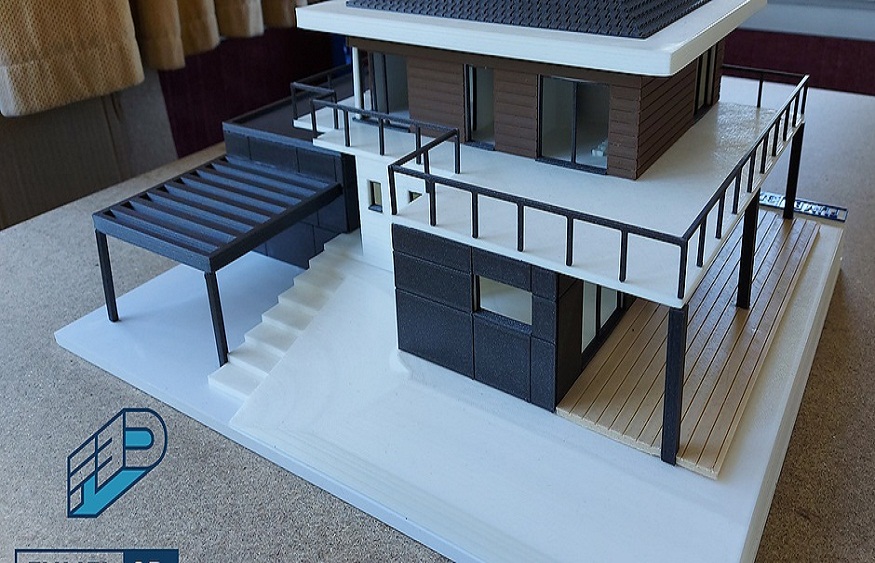Particularly in a design mecca such as Dubai, 3D maquettes have emerged as a vital tool in architectural visualization. There is an increasing need to represent structures and spaces in a detailed and extremely correct manner due to the increasing complexities in architectural designs. They can be physical or digital models that depict architectural designs. The way architectural concepts are presented has been changed by the combination of experienced Dubai 3D model makers and powerful 3D printing technology, enabling a more thorough grasp of design objectives.
3D Maquettes’ Function in Architectural Visualization
Using 3D maquettes, architects and clients may see the size, shape, and functionality of a project, creating a link between the two fields of architectural design and reality. Compared to conventional 2D drawings, these models provide a three-dimensional viewpoint that facilitates a deeper comprehension of material finishes, spatial relationships, and design subtleties.
3D maquettes are essential for communicating the concept behind complex projects in Dubai, a city renowned for its ground-breaking architectural achievements. These models aid in the precise and effective communication of design concepts, from skyscrapers to intricate urban planning, making sure that all project stakeholders are aware of the project’s whole scope.
The Accuracy and Intricacy Provided by 3D Model Creators
Expert craftsmen in Dubai apply modern technology in developing models that effectively articulate the concepts of architectural designs.3D model makers can produce models that are as realistic as possible and aesthetically beautiful by using state-of-the-art software and 3D printing technology. The makers can provide architects with every view of a structure, its details in terms of the facades, the texture of the architecture and the surrounding landscape.
This is why it is especially important in a city such as Dubai that puts so much emphasis on architectural creativity. Thus, 3D maquettes allow designers to express their vision without doubts, as well as adjust the main focus on the key aspects of their creations. Whether it is a residential complex, a luxury hotel or an office tower, these models are always a fun and efficient technique to analyze the design before it goes to the building phase.
Improving Engagement and Communication with Clients
One advantage of utilizing 3D maquettes is that they facilitate better communication between their clients and architects. Unlike blueprints which may be complex for anyone who is not conversant with the architect’s terminology and symbols, 3D maquettes provide a feel of the project and even teach one how the whole project is going to look like. Customers are in a more advantageous position in terms of asking questions, displaying comments and seeing and touching the identified design.
Besides, improving the satisfaction of the client, this syndicated process reduces the chance of misunderstandings or further alterations during the corresponding phase. Indeed, in the current Brazilian architectural market with the increasing demand for high-quality designs, especially in Dubai, the use of 3D maquettes is a useful tool for building trust that can help all the project stakeholders to be sure that everyone has a similar understanding of the project goals and objectives.
The Effect of 3D Printing on the Production of Maquettes
Assisting in Making Decisions and Validating DesignsA crucial step in the design validation process is the creation of 3D maquettes, which help architects and designers make decisions during the development stage. Through the provision of a reduced-scale model of the project, these models provide an in-depth analysis of design components, spatial arrangements, and overall aesthetics. Until they make a final decision, architects might utilize maquettes to test various design concepts, evaluate the effect of lighting, and investigate material pairings.
In Dubai, where architectural innovation sometimes entails unproven concepts and atypical forms for complicated projects, 3D maquettes offer a risk-free means of assessing a concept’s viability. By actively participating in the design validation process, possible problems are found early on, lowering the possibility of expensive revisions at the building stage.
Assisting with Marketing and Presentation Activities
Apart from their usefulness, 3D maquettes are an excellent tool for presentations and marketing. Developers and architects frequently utilize these models to display their projects at exhibits, client meetings, and promotional events in Dubai’s cutthroat real estate market. A well-made maquette is visually appealing and draws attention, which makes it a powerful tool for creating interest and winning over investors and future customers.
Superior maquettes offer a visual tale that transcends architectural blueprints, narrating the design’s story in a way that is compelling to viewers. Architects may make a strong argument for why their project stands out in the congested Dubai market by showcasing the unique selling aspects of their designs through a physical depiction of the building.
Encouraging Project Teams to Work Together
3D maquettes are useful for more than simply client presentations; they also help the several teams working on a project to collaborate. A common visual reference that aids in the coordination of activities might be advantageous for interior designers, engineers, contractors, and architects. Maquettes guarantee that all team members agree by giving a precise and unambiguous representation of the design, thereby lowering the possibility of misunderstandings and mistakes.
Large, interdisciplinary teams are frequently involved in projects in Dubai; in these situations, having a thorough maquette as a guide may expedite the coordination process and guarantee that everyone is working toward the same goal. By working together, projects are completed more quickly and to the high standards that have become the architectural landscape of the city’s norm.
Conclusion
In Dubai, 3D maquettes are now a crucial part of architectural visualization, providing a host of advantages over conventional design presentations. These models help project teams collaborate, promote design validation, and improve client engagement by offering a comprehensive, tangible depiction of architectural concepts. Greater originality and accuracy in architectural design are made possible by the increased efficiency and versatility of maquette fabrication, which has been made possible by the development of 3D printing companies technology.
3D maquettes are an essential tool for realizing imaginative concepts in a city recognized for pushing the frontiers of architecture. In the fast-paced environment of Dubai’s architectural business, their ability to express design intent, bring complicated concepts to life, and support decision-making processes makes them crucial. 3D maquettes will become even more important as technology develops, solidifying their position as an essential component of the design process.

